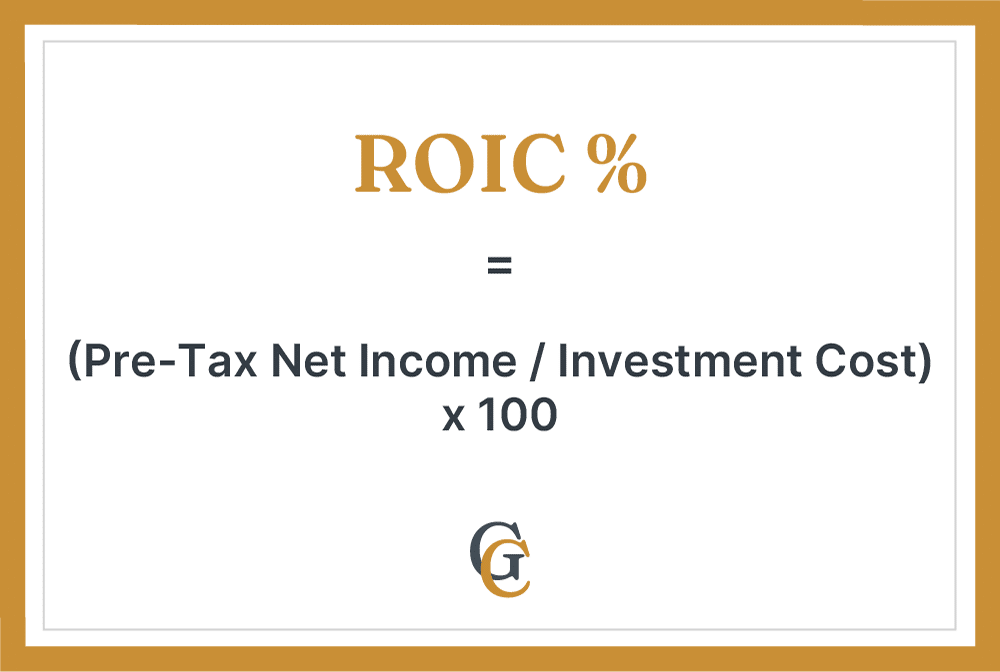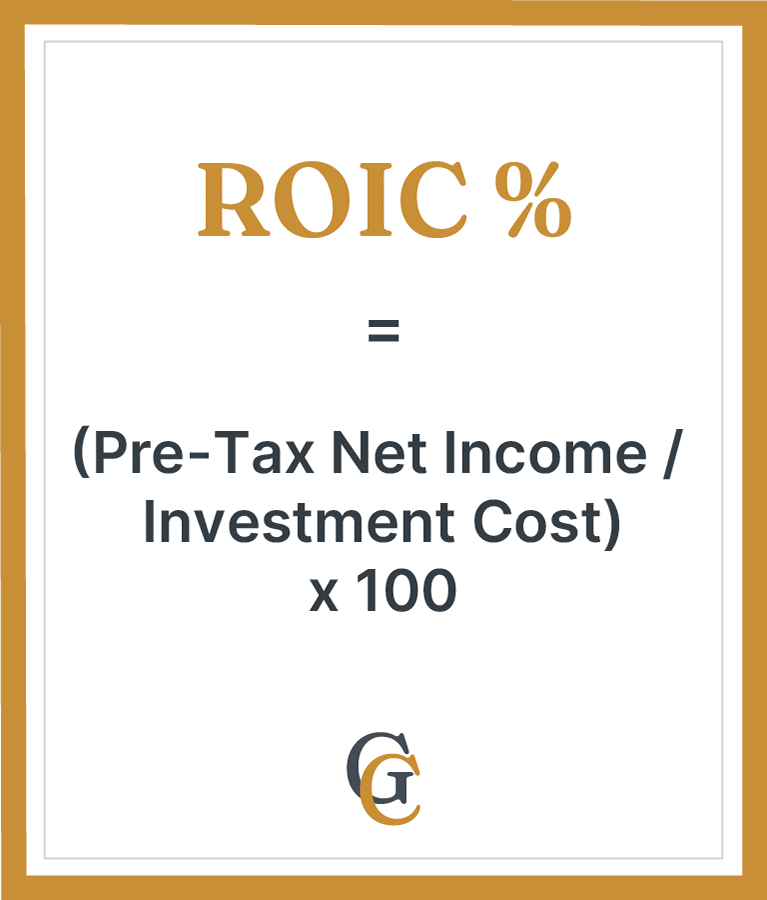In the fast-paced world of entrepreneurship and business management, maximizing your Return on Investment (ROI) is crucial for success. Understanding how to boost your Return on Invested Capital can be the difference between a thriving enterprise and one that struggles to stay afloat. With countless opportunities and potential pitfalls, how can business owners ensure they’re investing wisely to drive profitability and growth?
This comprehensive guide demystifies ROIC in a business context, providing practical strategies and insights to help you assess potential investments effectively. We’ll break down key financial metrics, explore factors influencing returns, and offer straightforward approaches to achieving optimal ROIC. Drawing from the expertise of financial specialist Greg Crabtree, we’ll empower you with the knowledge to make informed decisions that enhance your business’s financial health.
Understanding Return on Invested Capital (ROIC) in Business
Return on Invested Capital, commonly known as ROIC, is a fundamental concept in business finance. It measures the profitability of an investment relative to its cost, giving you insight into how effectively your capital is being utilized. Invested capital is money that the owners put in plus sweat equity.
Why Is ROIC Important?
ROIC is a performance measure used to evaluate the efficiency of an investment. It answers the critical question: “For every dollar invested, how much profit am I generating?” This metric helps business owners and investors assess the viability of investment opportunities and compare the profitability of different ventures.
The Basic Formula for Calculating ROIC


The simplest way to calculate ROIC is:
ROIC (%) = (Pre-Tax Net Income / Investment Cost) x 100
- Net Profit: The earnings after all expenses have been deducted.
- Investment Cost: The total amount of money invested in the venture.
For example, you invest $260,000 in your business and it generates a Pre-tax net income $100,00 ROIC would be:
ROIC = (($100,000 / $260,000) x 100 = 38%
Short-Term vs. Long-Term ROIC Expectations
Understanding the time frame of your ROIC is essential. Short-term ROIC focuses on immediate gains, typically within a year, and is crucial for investments like marketing campaigns or stock inventory. Long-term ROIC looks at returns over several years, important for strategic initiatives like developing new products, entering new markets, or significant capital expenditures.
Aligning your ROIC expectations with your business goals ensures you allocate resources effectively and set realistic benchmarks for success. Additionally, recognizing the difference between short-term and long-term returns can help in balancing immediate cash flow needs with sustainable growth strategies.
Why a 50% ROIC?
- Risk Compensation: A 50% ROIC is often seen as a substantial return that can justify potential risks associated with business investments.
- Competitive Advantage: Achieving higher returns provides a buffer against market fluctuations and competitive pressures. It allows your business to remain resilient and adaptable in changing market conditions.
- Growth Potential: Reinvesting high returns accelerates business growth and scalability. It enables you to fund new projects, expand into new markets, and innovate without relying heavily on external financing.
Key Factors Influencing Return on Investment in Business
Several factors can impact the ROIC of your business investments. Being aware of these elements allows you to mitigate risks and enhance potential returns.
Market Risks and Economic Conditions
External factors such as market volatility, economic downturns, or changes in consumer behavior can significantly affect ROIC. For instance, during an economic recession, consumer spending may decrease, impacting sales projections for new marketing campaigns.
Similarly, entering a highly competitive market without adequate differentiation can dilute expected returns. Staying informed about industry trends and economic indicators helps you anticipate market shifts and make proactive decisions. Implementing flexible strategies that can adapt to changing market conditions will also safeguard your investments against unforeseen economic challenges.
Internal Factors: Operational Efficiency and Cost Management
Operational inefficiencies and poor cost management can erode profits, diminishing your ROIC. Standardize Processes, reduce waste, and optimize resource allocation contribute to higher profitability and better returns on your investments. For example, implementing lean manufacturing techniques can lower production costs, while investing in employee training can enhance productivity. Additionally, adopting advanced technologies like automation and data analytics can provide deeper insights into operational performance, allowing for more informed decision-making and continuous improvement.
The Importance of Risk Assessment
Setting ROIC expectations without considering risk can lead to misguided investments. Assess the potential risks associated with each opportunity:
- Market Entry Risks: New markets may offer high returns but come with uncertainties such as cultural differences, regulatory challenges, and unpredictable consumer behavior.
- Regulatory Changes: Compliance costs can affect profitability, especially in industries like healthcare and finance where regulations are stringent and frequently updated.
- Operational Risks: Reliance on key personnel or suppliers introduces vulnerabilities. For instance, losing a critical employee or facing supply chain disruptions can significantly impact your ROIC.
Balancing potential returns against these risks ensures a more sustainable investment strategy. Implementing risk mitigation strategies, such as diversifying your investment portfolio or establishing contingency plans, can help protect your business from adverse outcomes and maintain steady returns.
Evaluating and Prioritizing Potential Investments
With numerous opportunities available, evaluating and prioritizing investments is crucial to maximize ROIC.
Steps for Thorough Investment Opportunity Assessments
- Define Clear Objectives: What do you aim to achieve with this investment? Increased sales, operational efficiency, market expansion?
- Project Potential Cash Flows: Estimate the additional revenue and profit the investment will generate.
- Align with Business Goals: Ensure the investment supports your long-term strategic vision.
- Consider Resource Availability: Assess whether you have the necessary capital, personnel, and time.
- Evaluate Risks and Mitigation Strategies: Identify potential challenges and how you can address them.
- Calculate Expected ROI: Use the ROIC formula to estimate returns.
Value Based Spending
Investing can often feel like navigating a sea of endless possibilities, where it’s easy to get caught up in the allure of high returns or the next big thing. However, value-based spending offers a grounded approach, enabling you to align your investments not just with your financial goals, but also with your personal values. This method ensures that your money not only grows but also supports causes and businesses that resonate with your ethical standards and lifestyle.
When considering where to allocate your resources, it’s crucial to ask strategic questions that align with value-based spending principles:
- Revenue Potential: Does the investment generate sufficient net revenue after accounting for necessary expenditures like cost of goods and labor?
- Cost of Goods or Services: Can this investment reduce the cost of goods or services so that the gross margin is higher than the investment spend?
- Labor Improvement: Will this enhance the efficiency of your workforce, possibly through technology or sustainable practices? Does it reduce direct labor costs by more than the amount spent?
- Expense Management: Could this investment minimize other expenses, providing a buffer against future costs?
- Cultural or Brand Alignment: Does investing here maintain or enhance the culture or brand identity you value? Ensure these investments reflect what the company stands for and what you support personally.
Investing in Marketing
Marketing investments are intended to drive sales and enhance brand visibility. To evaluate:
- Cost of Campaign: Total expenses for marketing activities.
- Expected Increase in Sales: Projected revenue growth from the campaign.
- ROIC Calculation: Determine if the increased profits meet or exceed your ROIC benchmark.
For example, investing $100,000 in a new marketing strategy should aim to generate at least $150,000 in net profit to meet a 50% ROIC. Additionally, consider the longevity of the marketing impact and whether the campaign can create lasting brand awareness that continues to generate returns beyond the initial investment period.
Calculating Expected Returns from Marketing Investment
Suppose you plan to allocate an additional $100,000 to a marketing campaign. Projected outcomes include:
- Increased Sales: Anticipated to generate $300,000 in additional revenue.
- Direct Costs: Cost of goods sold associated with increased sales is $150,000.
- Net Profit Increase: $300,000 (revenue) – $150,000 (direct costs) – $100,000 (marketing investment) = $50,000.
ROIC Calculation:
ROIC= ($50,000 / $100,000) x 100 = 50%
This calculation illustrates a scenario where the investment meets the 50% ROIC benchmark, aligning with conventional financial wisdom that such a return indicates a strong and potentially worthwhile investment.
Investing in Labor
Hiring new employees or enhancing team capabilities can improve productivity and service quality.
- Cost of New Hires: Salaries, benefits, and training expenses.
- Productivity Gains: Increased output or efficiency resulting from the investment.
- ROIC Assessment: Determine if the value added by new personnel meets your ROIC targets.
Keep in mind that returns from labor investments may take longer to materialize, potentially over multiple years. Most entrepreneurs want to see the return on their investments in three years or less. Investing in employee development programs can also lead to higher retention rates, reducing turnover costs and fostering a more skilled and motivated workforce. As new hires come on, it’s important to monitor their productivity and use your direct labor efficiency ratio as a productivity target for new labor hires.
Investing in Software and Processes
Upgrading software systems or optimizing processes can reduce operational costs and improve efficiency.
- Upfront Costs: Purchase, implementation, and training expenses.
- Operational Savings: Reduced labor costs, streamlined workflows, and error reduction.
- Long-Term Benefits: Consider both immediate savings and future gains from scalability.
Calculating ROIC for these investments involves comparing the cost savings and efficiency gains against the investment cost. Additionally, enhanced software capabilities can provide better data analytics, enabling more informed decision-making and further optimizing business operations.
Strategic Approaches for Achieving Optimal Returns
Implementing strategies that enhance profitability and efficiency is key to maximizing ROIC. They include:
- Standardize Processes: Create consistent procedures to improve efficiency.
- Leverage Technology: Automate repetitive tasks to reduce labor costs.
- Expand Wisely: Grow in areas where you have a competitive advantage.
By improving scalability, your investments yield better returns as the business can handle increased volume without proportional cost increases. Additionally, establishing scalable systems from the outset ensures that growth is manageable and sustainable.
The Role of Financial Literacy in Maximizing Returns
- Understand Financial Statements: Regularly review income statements, balance sheets, and financial statements.
- Monitor Key Metrics: Track ROIC, gross margin, net profit margin, and other vital indicators.
- Educate Your Team: Ensure that key personnel understand financial goals and contribute to achieving them.
Financial literacy empowers you to make data-driven decisions and identify opportunities for improvement. Investing in financial education for yourself and your team can lead to more strategic investment choices and better overall financial management.
Investing in Employees and Processes
- Training and Development: Enhance skills and capabilities of your workforce.
- Employee Engagement: Foster a culture that motivates employees to perform at their best.
- Process Improvement: Continuously refine operations to eliminate waste and increase efficiency.
Investments in people and processes often lead to sustainable long-term returns through increased productivity and innovation. Additionally, a well-trained and engaged workforce can drive higher levels of customer satisfaction, indirectly boosting ROIC through repeat business and positive word-of-mouth. One study shows that highly engaged employees can result in a 21% increase in profitability.
ROIC & The Real Estate Analogy
Think of your business like owning a property:
- Assets (Your Property): The total value of what you own.
- Liabilities (Your Mortgage): What you owe to others.
- Equity (Your Ownership): The difference between assets and liabilities.
Just as you would with real estate, you want your property’s value to appreciate and your equity to grow. In business, increasing profitability enhances your equity. Additionally, reinvesting profits back into the business can further amplify equity growth, similar to how property improvements can boost real estate value.
Embracing the Investment Mindset
To truly grasp the essence of investment strategies, it helps to conceptualize each dollar you invest as an employee:
- Investment Dollars as Employees: Each dollar should work for you, generating more income.
- Performance Evaluation: Just as you assess employee performance, evaluate how effectively your investments generate returns.
- Reallocation: If certain dollars aren’t performing, redirect them to more productive uses.
This Investment Mindset encourages active management of your capital to maximize ROIC. By treating investments like a team of employees, you can ensure that every dollar is contributing effectively to your business’s success and is being utilized to its full potential.
Maximizing Your ROIC
Maximizing your Return on Investment is essential for driving business success and achieving long-term profitability. By understanding ROIC, evaluating investments meticulously, and implementing strategic approaches, you can make informed decisions that propel your business forward. Remember, setting ambitious yet attainable ROIC benchmarks, like the 50% target suggested by Greg Crabtree, ensures you’re adequately compensated for the risks you take as a business owner.
To delve deeper into these insights, consider hiring Greg as a keynote speaker for your next event. His expertise and engaging presentations provide valuable strategies for enhancing ROIC. Additionally, you can explore his books, which offer in-depth knowledge and practical tips to help you optimize your investments and achieve greater financial success.



